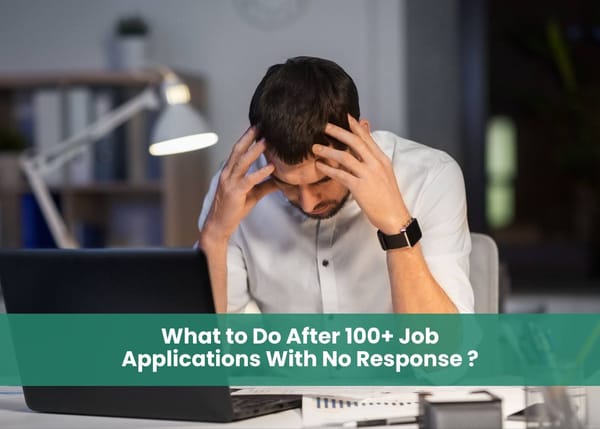Creating an ATS-Friendly Resume in 2026

Looking for a straight answer? Here it is: An ATS resume in 2026 needs clean, single-column formatting, exact keyword matches from job descriptions, and quantifiable achievements written in plain language. Skip the fancy graphics, use standard fonts like Arial or Calibri, and tailor every resume to the specific role you're applying for.
That's the quick version. But if you're tired of sending applications into a black hole and want to understand exactly how to beat the resume scanner systems standing between you and your dream job, this guide breaks down everything you need to know.
What Makes a Resume ATS-Friendly in 2026?
An ATS resume, that's short for Applicant Tracking System resume, is specifically designed to pass through software that scans, filters, and ranks applications before any human sees them. Think of it as your resume's first interview, except it's with a robot that doesn't care about your personality or creative flair.
Here's what matters to an ATS scanner: Can it read your text? Does your resume contain the right keywords? Is your experience formatted in a way the system understands?
Most companies (we're talking about 98% of Fortune 500 firms) use these systems to manage the overwhelming number of applications they receive. The ATS resume checker software looks for specific qualifications, skills, and experience that match the job posting. If your resume doesn't speak the system's language, it gets filtered out, even if you're perfectly qualified.
The good news? Making your resume ATS-friendly doesn't mean stripping away everything that makes you unique. It just means presenting your qualifications in a way both software and humans can appreciate.
Essential Formatting Rules for ATS Resume Success
Your formatting choices can make or break your application before anyone reads a single word. Here's what you need to get right:
Keep It Simple and Scannable
Use a clean, single-column layout with no tables, text boxes, or columns. ATS resume scanners struggle with complex formatting, and critical information placed in tables or graphics often gets skipped entirely or scrambled. Stick with standard section headings like "Work Experience," "Education," and "Skills", not creative alternatives like "My Journey" or "What I've Done."
Choose professional fonts like Arial, Calibri, or Times New Roman. Keep your font size between 10-12 points for body text. Your contact information (name, phone, email, LinkedIn) should go in the main body of your resume, not in the header or footer, where older resume scanner systems might miss it.
Critical ATS Resume Formatting Do's and Don'ts:
DO:
- Use standard bullet points for listing achievements
- Include dates in a consistent format (Month YYYY works best)
- Add both the full term and acronym for major skills (e.g., "Search Engine Optimization (SEO)")
- Save as PDF unless the job posting specifically requests a .docx file
- Place a dedicated Skills section near the top of your resume
DON'T:
- Add images, icons, photos, or graphics anywhere on your resume
- Use creative job titles that don't match industry standards
- Hide important information in headers, footers, or sidebars
- Submit without including employment dates and locations for each position
- Mix date formats throughout your resume (pick one and stick with it)
Many applicants make preventable mistakes that cause their resumes to fail the ATS checker scan. Learn more about common ATS parsing errors and how to fix them before you apply.
Keyword Optimization: Getting Your ATS Resume Scanner-Ready
Keywords are the heart of ATS optimization. The resume scanner compares your document to the job description, scoring you based on how well you match the required qualifications. Here's how to nail this:
Read the job posting carefully and identify the specific terms used for skills, tools, technologies, and qualifications. If the posting says "project management," don't write "overseeing initiatives." If it mentions "customer relationship management," don't abbreviate it as just "CRM" without also spelling it out.
Integrate these keywords naturally throughout your resume, in your professional summary, skills section, and work experience bullet points. Aim for matching 70-80% of the keywords from the job description. But here's the key: don't just stuff keywords randomly. They need to appear in context, describing real experience and achievements.
Understanding the importance of keywords in job applications can dramatically improve your callback rate.
Need help identifying which keywords to target? Check out these free tools for resume keyword research that can give you a competitive edge.
Common ATS Resume Mistakes That Kill Your Application
Even qualified candidates get filtered out because of avoidable mistakes. Here are the biggest ATS resume killers:
The Resume Scanner Can't Read Your Creativity
Graphics, columns, and fancy formatting confuse the ATS checker. Content placed in tables or text boxes often disappears entirely when the system parses your resume. Stick to a straightforward, one-column format using only text and standard bullet points.
Missing the Skills Section
Many ATS resume systems prioritize candidates who have a clearly labeled, bulleted skills section. Without it, the resume scanner might miss your qualifications entirely, even if they're mentioned elsewhere in your document.
Using Generic Resumes
Sending the same resume to every job posting means you're not matching specific keywords that each ATS scanner is looking for. Customizing your resume takes time, but it's the difference between getting interviews and getting ignored. This is exactly where services like Scale Jobs help busy professionals by handling the time-consuming work of tailoring applications to each specific role.
Format Inconsistencies
Mixing date formats (like "Jan 2022" in one place and "01/2022" in another) confuses the ATS resume checker and can lead to miscalculations of your total experience. Use one format throughout—"Month YYYY" or "MM/YYYY" works best.
Buzzword Overload Without Context
Stuffing your resume with buzzwords like "synergy" or "go-getter" without backing them up with concrete achievements looks like spam to both the ATS checker and human recruiters. Focus on quantifiable results instead: "Increased customer retention by 35%" beats "excellent people skills" every time.
If you've included testimonials or endorsements on your resume, make sure you're formatting testimonials for ATS resumes correctly so they don't cause parsing issues.
Testing Your Resume with an ATS Resume Checker
Before you hit "submit" on any job application, run your resume through an ATS checker tool. These resume scanner simulators show you exactly how well your document will perform when it hits a real applicant tracking system.
Look for tools that provide:
- A match score showing what percentage of job description keywords you've included
- Identification of missing keywords and skills
- Formatting error detection
- Suggestions for improvement
You'll find several free options online, though paid ATS resume checker tools often provide more detailed feedback. The investment in testing is minimal compared to the cost of missed opportunities.
Scale Jobs offers a suite of free tools, including an ATS Score Checker that helps you identify exactly where your resume needs improvement. These tools take seconds to use and can dramatically increase your interview rate.
After running your resume through an ATS scanner, review the feedback carefully. Missing keywords? Add them naturally to your experience bullets. Formatting issues? Simplify your layout. Low match score? Tailor your resume more closely to the job description.
Your Next Steps to Landing Interviews Faster
Creating an ATS-friendly resume is the foundation, but it's just the first step in a successful job search. Once you've optimized your resume format and keywords, you need to actually apply consistently and strategically.
Here's where most job seekers struggle: they spend hours perfecting their ATS resume, then burn out applying to dozens of positions manually. Each application requires reading the job description, tweaking keywords, customizing your cover letter, and filling out endless online forms.
This is exactly why smart professionals turn to services that handle the application process for them. Scale Jobs combines human expertise with AI efficiency to apply to hundreds of relevant positions on your behalf, using customized, ATS-optimized resumes and cover letters for each application. Instead of spending your evenings copying and pasting information into application portals, you can focus on networking and preparing for the interviews that actually come from your applications.
The difference is measurable: while the average job seeker might submit 10-15 applications per week, managed services can submit 50-100+ tailored applications in the same timeframe, dramatically increasing your chances of landing interviews.
Whether you handle applications yourself or use a service, remember these final tips:
- Save your resume file with a professional name like "FirstName_LastName_Resume.pdf"
- Proofread meticulously, typos can confuse the ATS checker and look careless to humans
- Keep a master resume with all your experience, then customize versions for each application
- Track which version you sent to which company, so you're prepared for interviews
The job market in 2026 moves fast. Your resume needs to work just as quickly, passing through the ATS resume scanner and landing in front of decision-makers who can actually hire you.
FAQ
Q1. What file format should I use for my ATS resume?
PDF is best for most applications because it preserves your formatting. Modern ATS resume checkers can read text-based PDFs without issues. Only use .docx if the job posting specifically requests it or if the application system forces that format.
Q2. How do I know if my resume is ATS-friendly?
Run it through an ATS checker tool to get a specific score. Look for a clean, single-column layout with standard fonts, no graphics or tables, clearly labeled section headings, and keywords that match the job description. If you can copy-paste text from your PDF easily, that's a good sign the resume scanner will read it correctly.
Q3. Should I use the same resume for every application?
No. Generic resumes rarely pass the ATS checker because they don't match the specific keywords and requirements in each job posting. Customize your resume for each application. At a minimum, adjust your skills section and professional summary to mirror the language in the job description.
Q4. Can an ATS scanner read PDF files?
Yes, modern applicant tracking systems can read text-based PDF files without problems. Avoid PDFs created from scanned images (like photographs of printed resumes), as these aren't machine-readable. Always create your resume digitally in a word processor, then export to PDF.
Q5. How many keywords should I include in my ATS resume?
Focus on matching 70-80% of the keywords from the job description. Don't count, just make sure every major skill, qualification, and requirement mentioned in the posting appears naturally in your resume where you actually have that experience. Quality and relevance matter more than quantity.
Q6. What's the biggest mistake people make with ATS resumes?
Using the same generic resume for every application. Each ATS resume checker scores your resume based on that specific job's requirements. A resume optimized for one role won't necessarily pass the scanner for a different position, even in the same field. Customization isn't optional; it's essential.




